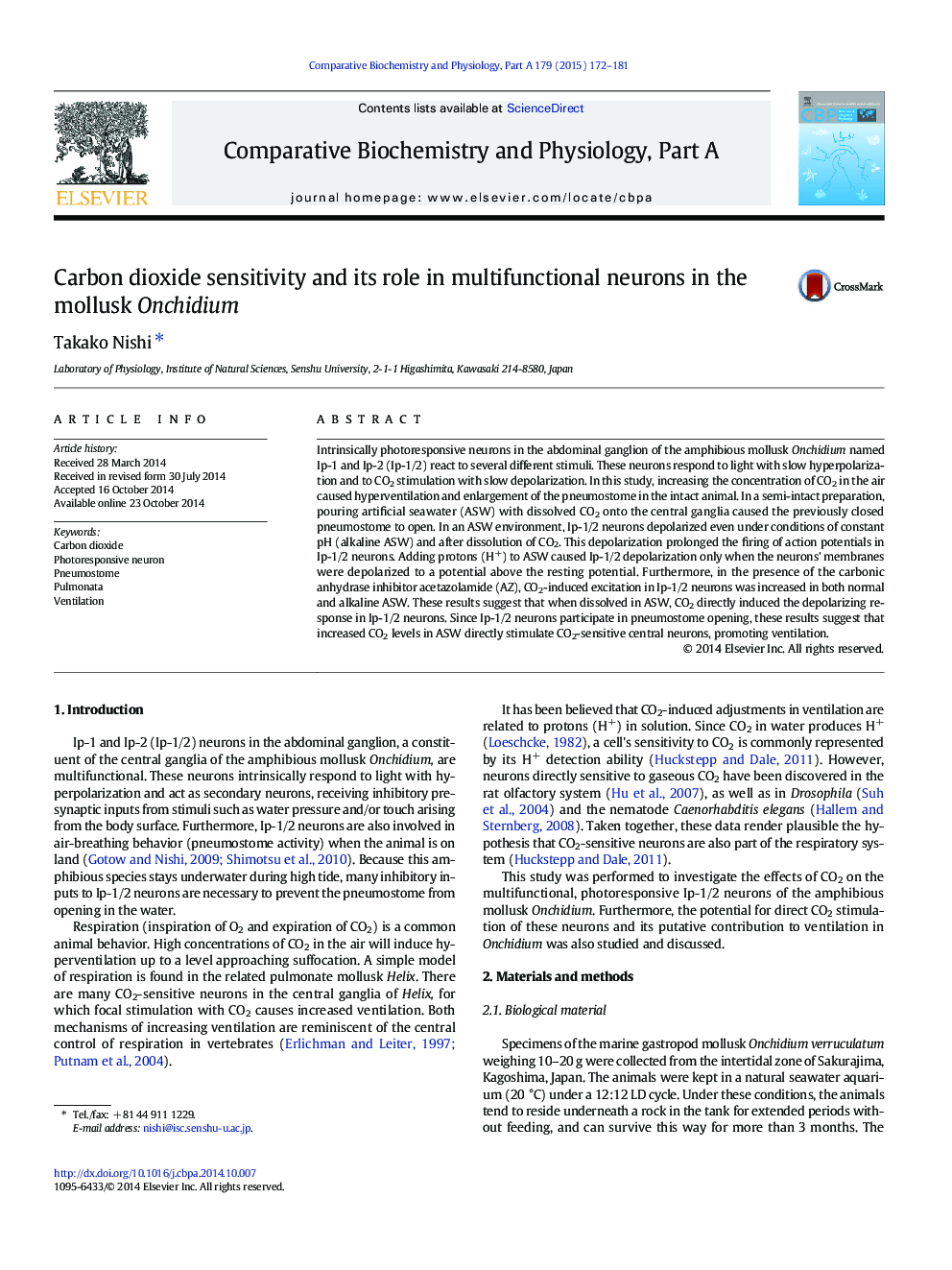| کد مقاله | کد نشریه | سال انتشار | مقاله انگلیسی | نسخه تمام متن |
|---|---|---|---|---|
| 1972141 | 1539008 | 2015 | 10 صفحه PDF | دانلود رایگان |
عنوان انگلیسی مقاله ISI
Carbon dioxide sensitivity and its role in multifunctional neurons in the mollusk Onchidium
دانلود مقاله + سفارش ترجمه
دانلود مقاله ISI انگلیسی
رایگان برای ایرانیان
موضوعات مرتبط
علوم زیستی و بیوفناوری
بیوشیمی، ژنتیک و زیست شناسی مولکولی
زیست شیمی
پیش نمایش صفحه اول مقاله

چکیده انگلیسی
Intrinsically photoresponsive neurons in the abdominal ganglion of the amphibious mollusk Onchidium named Ip-1 and Ip-2 (Ip-1/2) react to several different stimuli. These neurons respond to light with slow hyperpolarization and to CO2 stimulation with slow depolarization. In this study, increasing the concentration of CO2 in the air caused hyperventilation and enlargement of the pneumostome in the intact animal. In a semi-intact preparation, pouring artificial seawater (ASW) with dissolved CO2 onto the central ganglia caused the previously closed pneumostome to open. In an ASW environment, Ip-1/2 neurons depolarized even under conditions of constant pH (alkaline ASW) and after dissolution of CO2. This depolarization prolonged the firing of action potentials in Ip-1/2 neurons. Adding protons (H+) to ASW caused Ip-1/2 depolarization only when the neurons' membranes were depolarized to a potential above the resting potential. Furthermore, in the presence of the carbonic anhydrase inhibitor acetazolamide (AZ), CO2-induced excitation in Ip-1/2 neurons was increased in both normal and alkaline ASW. These results suggest that when dissolved in ASW, CO2 directly induced the depolarizing response in Ip-1/2 neurons. Since Ip-1/2 neurons participate in pneumostome opening, these results suggest that increased CO2 levels in ASW directly stimulate CO2-sensitive central neurons, promoting ventilation.
ناشر
Database: Elsevier - ScienceDirect (ساینس دایرکت)
Journal: Comparative Biochemistry and Physiology Part A: Molecular & Integrative Physiology - Volume 179, January 2015, Pages 172-181
Journal: Comparative Biochemistry and Physiology Part A: Molecular & Integrative Physiology - Volume 179, January 2015, Pages 172-181
نویسندگان
Takako Nishi,